Utilize this comprehensive nursing care plan and management guide to provide effective care for patients with influenza. Gain valuable insights on nursing assessment, interventions, goals, and nursing diagnosis specifically tailored for influenza in this guide.
What is influenza?
Influenza (also known as flu, or grippe) is an acute inflammation of the nasopharynx, trachea, and bronchioles, with congestion, edema, and the possibility of necrosis of these respiratory structures. Influenza is a highly contagious airborne disease of the respiratory tract caused by three different types of Myxovirus influenzae. It occurs sporadically or in epidemics which peaks usually during colder months. In tropical areas, influenza occurs throughout the year. The WHO estimates that 1 billion influenza cases, 3 to 5 million severe cases, and 290,000 to 650,000 influenza-related respiratory deaths occur each year worldwide (Nguyen & Stuart, 2022).
The presentation of influenza virus infection varies, but it usually overlaps with those of many other viral upper respiratory tract infections (URTI). Typical signs and symptoms include cough, fever, sore throat, myalgias, headache, nasal discharge, weakness and severe fatigue, tachycardia, and red, watery eyes. Influenza has been diagnosed traditionally on the basis of clinical criteria, but rapid diagnostic tests are becoming more widely used. The gold standard for diagnosing influenza a and B is a viral culture of nasopharyngeal samples or throat samples (Nguyen & Stuart, 2022).
Nursing Care Plans & Management
Unless complications occur, influenza doesn’t require hospitalization and nursing care usually focuses on the prevention of the disease and relief of symptoms.
Nursing Problem Priorities
The following are the nursing priorities for patients with influenza:
- Management of respiratory dysfunction.
- Managing fever and respiratory symptoms.
- Infection control and prevention.
- Fluid and electrolyte imbalance.
Nursing Assessment
Assess for the following subjective and objective data:
- Rhinorrhea or “runny nose”
- Irritating nonproductive cough
- Decreased breath sounds
- Adventitious breath sounds
- Production of sputum
- Coughing
- Hemoptysis
- Cyanosis
- Dyspnea
- Pulmonary edema
- Fever
- Weakness
- Diaphoresis
- Fatigue
- Leukopenia
- Sputum
- Erythema to tonsils, soft and hard palate, and pharyngeal wall
- Abnormal chest X-rays
- Increased temperature
- Tachycardia
- Tachypnea
- Dry mucous membranes
- Dehydration
- Oliguria
- Seizure
- Changes in mentation
- Increased BUN and creatinine
- Electrolyte imbalances
Assess for factors related to the cause of influenza:
- Tracheobronchial and nasal secretions
- Increased peripheral airway resistance caused by drug therapy
- Pneumonia
- Inflammation from viral infection
- Pneumonia
- Hemorrhagic bronchitis
Nursing Diagnosis
Following a thorough assessment, a nursing diagnosis is formulated to specifically address the challenges associated with influenza based on the nurse’s clinical judgement and understanding of the patient’s unique health condition. While nursing diagnoses serve as a framework for organizing care, their usefulness may vary in different clinical situations. In real-life clinical settings, it is important to note that the use of specific nursing diagnostic labels may not be as prominent or commonly utilized as other components of the care plan. It is ultimately the nurse’s clinical expertise and judgment that shape the care plan to meet the unique needs of each patient, prioritizing their health concerns and priorities.
Nursing Goals
Goals and expected outcomes may include:
- The client will achieve the return of and ability to maintain patent airways and respiratory status baselines.
- The client will have clear breath sounds to auscultation and will have respiratory status parameters with optimal air exchange.
Nursing Interventions and Actions
Therapeutic interventions and nursing actions for patients with influenza may include:
1. Promoting Effective Airway Clearance
Viral respiratory tract infections are among the most common illnesses worldwide, and their severity widely varies from the common cold to severe respiratory tract infections. Influenza A virus causes seasonal respiratory infections, leading to half a million deaths annually. Only a few clinically effective vaccines or specific antiviral drugs are available for the prevention and treatment of viral respiratory infections. Thus, the mechanisms by which viruses are removed from the respiratory tract are indispensable for effective viral clearance and airway host defense. Mucociliary clearance is an important defense mechanism that requires coordinated ciliary activity and proper mucus production to propel airway surface liquids that trap pathogens and pollutants (Kamiya et al., 2020).
Assess respiratory status for rate, depth, ease, use of accessory muscles, and work of breathing
Changes may vary from minimal to extreme caused by bronchial swelling, increased mucus secretions caused by oversecretion of goblet cells and tracheobronchial infection, narrowing of air passageways, and the presence of other disease states complicate the current condition. Tachypnea, shallow respirations, and asymmetric chest movement are frequently present because of the discomfort of moving chest walls or secretions in the lung.
Auscultate the lung fields for the presence of wheezes, crackles (rales), rhonchi, or decreased breath sounds.
Wheezing is caused by the squeezing of air past the narrowed airways during expiration which is caused by bronchospasms, edema, and secretions obstructing the airways. Crackles or rales, result from the consolidation of leukocytes and fibrin in the lung causing an infection or fluid accumulation in the lungs. Decreased breath sounds may indicate alveolar collapse with little to no air exchange in the lung area being auscultated and usually results in poor ventilation.
Monitor oxygen saturation by pulse oximetry, and notify the healthcare provider of readings <90% or as prescribed.
High-level oxygen can cause severe damage to tissues, oxygen toxicity, increases in A-a gradients, microatelectasis, and ARDS. Oximetry readings of 90% are associated with increased morbidity and mortality and correlate with PaO2 of 60 mmHg and levels below 60 mmHg, which indicate hypoxemia (Majumdar et al., 2011).
Assess the client for pallor or cyanosis, especially to nail beds and around the mouth.
Although not a reliable indicator of the loss of airway patency, this may indicate hypoxemia. Oxygen might not reach hemoglobin inadequate or in sufficient amounts as a result of conditions affecting the respiratory system such as influenza (Adeyinka & Kondamudi, 2022). Cyanosis does not occur until a level of 5 grams of reduced hemoglobin/100 ml of blood in the superficial capillaries is reached.
Monitor the client for cough and production of sputum, noting amount, color, character, and the client’s ability to expectorate secretions, and the ability to cough.
Mucus color from yellow to green may indicate the presence of infection. Tenacious, thick secretions require more effort and energy to expectorate through coughing, and may actually create an obstruction stasis that leads to infection and respiratory changes. Cough and other respiratory symptoms initially may be minimal but frequently progress as the infection evolves. The client may report a nonproductive cough, or cough-related pleuritic chest pain, and dyspnea (Nguyen & Stuart, 2022).
Monitor the client’s vital signs.
Fever may vary widely among clients, with some having low fevers (in the 100℉ [37.7℃]) and others developing fevers as high as 104℉. Some clients report feeling feverish and feeling chills. Tachycardia may occur, which most likely results from hypoxia, fever, or both (Nguyen & Stuart, 2022).
Assess skin and mucous membrane changes.
The skin may be warm to hot, depending on the core temperature status. A client who has been febrile with poor fluid intake may show signs of mild volume depletion with dry skin (Nguyen & Stuart, 2022).
Observe the client’s general appearance and strength.
Some clients appear acutely ill, with some weakness and respiratory findings, whereas others appear only mildly ill. The client’s eyes may be red and watery. Weakness and severe fatigue may prevent the client from performing their normal activities or work. The client may also report needing additional sleep. In some cases, clients diagnosed with influenza may be bedridden (Nguyen & Stuart, 2022).
Position the client in a high Fowler or semi-Fowler position, if possible.
One of the main goals of positioning, and specifically the use of upright positions, is to improve lung function in clients with respiratory disorders. A study found that forced expiratory volume in 1 second (FEV1) is higher in erect positions. Recumbent positions limit expiratory volumes and flow, which may reflect an increase in airway resistance, a decrease in elastic recoil of the lung, or decreased mechanical advantage of forced expiration, presumably affecting large airways (Katz et al., 2018).
Turn the client in every two hours and as needed.
Repositioning promotes drainage of pulmonary secretions and enhances ventilation to decrease the potential for atelectasis. In side-lying positions, when the bed is flat, the abdominal contents fall forward. The dependent hemidiaphragm is stretched to a good length for tension generation, while the non-dependent hemidiaphragm is more flattened. Changes in lung volumes may thus balance themselves out due to a better diaphragmatic contraction but decreased space in the thorax (Katz et al., 2018).
Encourage early ambulation and aerobic exercises as indicated.
Early and protocol-based mobilization is important for functional recovery and shortening the length of hospital stay. Mobilization generally includes sitting on the edge of the bed, moving from the bed to the chair, standing next to the bed, walking on the spot, and walking with or without ambulatory assisting devices (Katz et al., 2018).
Perform postural drainage and percussion, as ordered.
Postural drainage utilizes gravity to help raise secretions and clear sputum. Percussion and/or vibration may assist with the movement of secretions away from bronchial walls and enable the client to cough them up and increase the force of expiration. Some positions utilized during chest physiotherapy may be contraindicated in older adults as they may not tolerate intense percussion because of the fragility of bones and skin (Sereearuno et al., 2020).
Encourage fluids, up to three to four liters/day unless contraindicated.
This provides hydration and helps to thin secretions for easier mobilization and removal. Fluids, especially warm fluids, aid in the mobilization and expectoration of secretions. The client must avoid extremely hot, or cold, beverages, however, because they may predispose the client to cough spells, leading to dyspnea or bronchospasms.
Encourage deep breathing exercises and coughing exercises every two hours. Instruct the client to splint the chest when performing coughing exercises.
Deep breathing facilitates the maximum expansion of the lungs and smaller airways. This can restore atelectasis, improve oxygenation and lung recruitment, increase functional residual capacity and tidal volume, and potentially help clear secretions (Shin, 2019). Coughing is a natural self-cleaning mechanism, assisting the cilia to maintain patent airways. Splinting reduces chest discomfort, and an upright position favors deeper, more forceful cough effort.
Suction the client if needed, or if oxygen desaturation is present.
The client may be too weak or fatigued to remove their own secretions. Suctioning may also stimulate coughing or mechanically clear the airway in a client who is unable to do so because of an ineffective cough or decreased level of consciousness.
Instruct the client on alternative types of coughing exercises, such as quad thrusts or mechanical insufflation-exsufflation (MIE), if the client has difficulty during coughing.
This minimizes fatigue by assisting the client in increasing expiratory pressure and facilitating cough. MIE is a commonly used method to remove excessive sputum from clients who cannot effectively expectorate sputum due to an impaired cough. Manual techniques such as assistant cough or thoracoabdominal thrusts may be applied to facilitate sputum release (Shin, 2019).
Instruct the client on the use of incentive spirometry.
Incentive spirometry has been widely used to prevent pulmonary complications and to improve lung function in nonambulatory clients. Deep breathing exercises can more effectively induce maximal inspiration when clients receive visual feedback through incentive spirometry. Generally, the client performs five to ten repetitions of a sequence of performing deep breathing slowly, holding the breath for two to three seconds, and then exhaling slowly. If sputum needs to be released, it is expectorated by coughing at the end of the session (Shin, 2019).
Encourage the client to join smoking cessation programs.
Smoking causes increased mucus production, vasoconstriction, increased blood pressure, inflammation of the lung lining, and decreased numbers of macrophages in the airways and mucociliary blanket.
Instruct the client to avoid crowds and persons with upper respiratory infections when possible.
This prevents possible transmission of infection to the client who already is immunocompromised. Influenza A is generally more pathogenic than influenza B. Epidemics of influenza C have been reported, especially in young children (Nguyen & Stuart, 2022).
Place the client in droplet precaution interventions.
Droplet precautions should be implemented for clients with suspected or confirmed influenza for seven days after illness onset or until 24 hours after the resolution of fever and respiratory symptoms, whichever is longer, while the client is admitted. The healthcare personnel entering the client’s room must strictly wear a facemask and remove it when leaving the room (Centers for Disease Control and Prevention, 2021).
Administer antivirals as ordered.
Antiviral treatment is recommended as soon as possible for clients with confirmed or suspected influenza who have severe, complicated, or progressive illnesses or who require hospitalization. For outpatient clients, antivirals are recommended if there is a confirmed or suspected risk for influenza complications on the basis of age or underlying medical conditions. Currently recommended antiviral medications include oseltamivir, zanamivir, peramivir, and baloxavir marboxil (Nguyen & Stuart, 2022).
Administer influenza vaccine as prescribed.
The influenza vaccine provides reasonable protection against immunized strains. The vaccination becomes effective 10 to 14 days after administration. It has a 50 to 60% efficacy against influenza B viruses and 70% efficacy against influenza B viruses. Vaccines against seasonal influenza are reformulated annually to contain the most recently circulating strains (Nguyen & Stuart, 2022).
2. Improving Breathing Pattern and Breathing Exercises
Influenza viruses spread from human to human via aerosols created when an infected individual coughs or sneezes. If not neutralized by secretory antibodies, the virus invades airway and respiratory tract cells. Once the virus is within host cells, cellular dysfunction and degeneration occur. As in other viral infections, systemic symptoms such as dyspnea or tachypnea result from the release of inflammatory mediators (Nguyen & Stuart, 2022).
Assess vital signs and carefully monitor respiratory status for baseline rate, rhythm, and character.
Respiratory distress and changes in vital signs occur because of physiological stress or may indicate developing shock due to hypoxia. A review of avian influenza cases in four countries found that the clinical course progressed to ARDS and respiratory failure in 70 to 100% of clients (Nguyen & Stuart, 2022).
Monitor pulse oximetry readings.
Oximetry approximates arterial blood gas oxygen saturation and helps to identify oxygenation dysfunction and respiratory status changes. In severe cases of influenza, the client is likely to have hypoxemia, and the alveolar-arterial gradient may be increased (>35 mm Hg) (Nguyen & Stuart, 2022).
Auscultate breath sounds every four hours and as needed.
This assists with the identification of changes in respiratory status, the presence of adventitious breath sound or decreased breath sounds. The older adult client may have infiltrates in the interstitium, bilateral lobes, and anterior and lower lung fields. Generally, pulmonary findings may include dry cough with clear lungs or rhonchi, as well as focal wheezing (Nguyen & Stuart, 2022).
Assess the client for complaints of pain and medicate as needed.
Pain decreases respiratory effort and chest excursion, which decreases ventilation and perfusion. Analgesia relieves pain and promotes improved respiratory effort. Cough-related pleuritic chest pain is a common manifestation of respiratory infections. Additionally, any type of infection has the potential to spread to the pleura, but viral infections are usually responsible.
Maintain a calm attitude, assisting the client to “take control” by using slower, deeper respirations.
This assists the client in dealing with the physiological effects of hypoxia, which may be manifested as anxiety or fear. Breathing may no longer be an involuntary activity but require conscious effort, depending on the involvement of respiratory muscles.
Encourage the client to maintain a semi-Fowler or high-Fowler position as tolerated.
This promotes chest expansion and enhances respiratory effort. Standing and sitting have been shown to lead to the highest lung volumes. At higher lung volumes, the elastic recoil of the lungs and the chest wall is greater. In addition, the expiratory muscles are capable of generating higher intrathoracic pressure, pushing air through narrow airways at high speed, which results in higher peak expiratory flow (PEF) and FVC (Katz et al., 2018).
Encourage the client and assist with the use of incentive spirometry, nebulizers, etc., as ordered.
These interventions assist in preventing atelectasis or lung collapse and ensure proper use of equipment. Incentive spirometry has been widely used to prevent pulmonary complications and to improve lung function in clients with respiratory disorders. Flutter and Acapella devices combine positive expiratory pressure therapy and high-frequency oscillations in the airway. They can reduce airway collapse and improve mucus discharge, enhancing lung function and oxygenation (Shin, 2019).
Perform chest physiotherapy, chest percussion, and postural drainage as ordered.
In percussion, cupped hands or the palm cup are used to manually clap the affected lung and perform postural drainage. This allows the shifting of secretions from the peripheral airway to the central airway, enhancing airway clearance. Vibrations can be performed manually or using mechanical devices (Shin, 2019).
Encourage the client to change position every two hours and as needed, and assist as needed.
This facilitates comfort and mobilizes pulmonary secretions. Although there is a lack of evidence for the interval of position change, it is generally performed at two to four-hour intervals, which can help reduce the incidence of pulmonary complications such as nosocomial pneumonia and atelectasis (Shin, 2019).
Maintain ordered isolation techniques.
Place the client with suspected or confirmed influenza for seven days after illness onset or until 24 hours after the resolution of fever and respiratory symptoms, whichever is longer, while the client is in a healthcare facility (Centers for Disease Control and Prevention, 2021).
Instruct the client and/or family members regarding isolation requirements and ensure that they adhere to the proper techniques.
Clients under droplet precautions should wear a facemask and follow respiratory hygiene and cough etiquette and hand hygiene during transport outside of the isolation room. Before discharge, communicate the client’s diagnosis and current precautions with post-hospital care providers as well as transporting personnel (Centers for Disease Control and Prevention, 2021).
Teach the client how to use a pillow to split the chest with cough efforts.
Splinting assists in reducing pain associated with cough. Supporting the chest and abdominal muscles makes coughing more effective and less traumatic. Additionally, instruct the client to place hands below the diaphragm and push upward as the client exhales. This is called a “quad cough”. This technique is generally reserved for clients with stable injuries once they are in the rehabilitation stage.
Instruct the client in relaxation techniques, guided imagery, muscle relaxation, and breathing exercises.
These interventions assist in pain reduction and alleviate anxiety which may improve respiratory effort and oxygenation. Deep breathing exercises introduce air into the lungs using negative air pressure generated by the client’s diaphragm instead of the accessory respiratory muscles. This can restore atelectasis, improve oxygenation and lung recruitment, increase functional residual capacity and tidal volume, and potentially help clear secretions (Shin, 2019).
Administer oxygen as ordered.
This provides supplemental oxygen and helps alleviate respiratory distress caused by hypoxemia. Supplemental oxygenation is given to manage respiratory symptoms or objective hypoxia. Ventilatory support with a bag-valve-mask device or field intubation may be required if the client is in respiratory failure (Nguyen & Stuart, 2022).
3. Managing Pain and Discomfort
Influenza causes many signs and symptoms that create pain and discomfort for the client. Myalgias are common and range from mild to severe. Frontal or retro-orbital headache is common and is usually severe. A sore throat may be severe and may last three to five days. The sore throat may be a significant reason why the client would seek medical attention (Nguyen & Stuart, 2022).
Assess the client for complaints of headaches, sore throat, general malaise or body weakness, muscle aches, and pain.
These symptoms are caused by inflammation or elevated temperature. The client may frequently feel sore muscles which can leave the client weak, fatigued, and exhausted. Muscle aches and pain happen because of an immune response to the infection. Dehydration may also contribute to muscle pain (Duda, 2022).
Assess changes in vital signs.
Vital signs are usually increased as a result of autonomic response to pain. Heart rate usually increases with acute pain, and blood pressure may elevate slightly due to severe headaches and muscle discomfort.
Observe for irritability and sleep disturbances.
These nonverbal cues may indicate the presence or degree of pain being experienced. Some clients, despite extreme exhaustion, may have difficulty falling asleep due to muscle discomfort, therefore, a position of comfort must be evaluated and recommended.
Provide a restful, quiet environment. Schedule the client’s rest periods and activities.
This reduces stimuli that may increase pain. Rest and sleep are vital for healing and balancing the body’s metabolic demands and consumption. Adequate rest and sleep can also enhance coping with stress and discomfort.
Provide warm baths or a heating pad to aching muscles.
Warmth causes vasodilation and decreases discomfort. A warm bath or shower can loosen tight, painful muscles and relieve muscle aches. If fever is present, the water should be kept lukewarm to avoid raising the temperature more. Heating pads or blankets may also relieve muscle aches, but careful use is imperative to avoid burns (Duda, 2022).
Provide a cool compress to the head.
Continuous application of cool water to the skin can be achieved by submerging a small cloth or towelette in cold water and then wringing it out, and then placing the cool cloth over the client’s forehead. This can be changed and re-submerged when it is no longer cool (Gregory, 2021).
Provide backrubs as needed.
Massage therapy can help with muscle aches and headaches and may indirectly help the client recover faster because it can reduce cortisol levels in the body. The stress hormone weakens the immune system by impairing certain infection-fighting WBCs. Using topical relief creams for massaging muscle aches may also improve blood flow and relieve the pain (Duda, 2022).
Encourage gargling with warm water; provide throat lozenges as necessary.
A sore throat is usually worse in the mornings because the throat tends to become dry overnight. Having lozenges or hard candies or anything that stimulates saliva production will keep the throat moist and relieve discomfort. For younger children, cold liquids and popsicles may provide relief, and avoid the risk of aspiration (News in Health, 2013).
Increase fluid intake as tolerated.
In influenza, the body tends to lose more fluids through excessive sweating, vomiting, diarrhea, and fever. Drinking increased amounts of clear liquids will replace the fluid losses and aid the body’s immune system (Duda, 2022).
Instruct the client in deep breathing, relaxation techniques, guided imagery, massage, and other nonpharmacologic aids.
This helps the client to focus less on pain and may improve the efficacy of analgesics by decreasing muscle tension. Relaxation techniques aid in the management of stress, promote a sense of well-being, may reduce analgesic needs, and promote healing. These interventions may also redirect attention from pain.
Instruct the client regarding the proper use of acetaminophen.
Acetaminophen is a non-opioid analgesic and antipyretic agent used to relieve pain and headache but should be used cautiously in clients with liver dysfunction because of acetaminophen metabolism in the liver. It is used as a single agent for mild to moderate pain and combined with an opioid analgesic for severe pain (Gerriets & Nappe, 2022).
Educate the client regarding NSAIDs and to avoid the use of aspirin
NSAIDs are a drug class FDA-approved for use as antipyretic, anti-inflammatory, and analgesic agents. Acetylated salicylates such as aspirin can potentially cause hemorrhage and ulceration, therefore, must be avoided. This is due to their antiplatelet activity and typically causes a problem if the client has a history of gastric ulcers, diseases that impair platelet activity, and in some perioperative cases (Ghlichloo & Gerriets, 2022).
Promote the use of a vaporizer or humidifier as approved by the healthcare provider.
Dry air can make the symptoms of influenza worse, especially sore throat. During infection, the respiratory tract produces increased mucus which helps in preventing the spread of infection. If the air is cold and dry, mucus dries up in the airways and decreases airway clearance of pathogens and viruses. Maintaining a relative humidity between 40 to 60% can reduce the spread of the virus and relieve respiratory symptoms. It may also reduce the pain and inflammation of the throat and aid the client in sleeping better (Duda, 2022).
4. Managing Hyperthermia
Acute infections often stimulate a febrile response. A mild fever appears to improve outcomes and diminish viral replication by several mechanisms and improve host defense mechanisms against the pathogen. However, a fever may also damage host cellular and tissue function and increase metabolic demands. At temperatures at the lower end of the febrile range, the benefit of the fever appears to outweigh the detrimental effects. However, at higher temperatures, the outcome worsens, suggesting that the disadvantages of fever on the host predominate (Walter, 2021).
Monitor vital signs especially temperature, every two to four hours and as needed. Utilize the same methods of temperature reading with each measurement.
This helps to evaluate the efficacy of treatment and monitors for complications that may occur as a result of increased temperature. Consistency in methods allows for accurate data collection and correlation. Increased temperature is a response to the inflammatory process associated with the disease. Fever may vary widely among clients, with some having low fevers (in the 100℉ [37.7℃] range) and others developing fevers as high as 104℉ (40℃) (Nguyen & Stuart, 2022).
Note shaking chills or profuse diaphoresis.
Some clients may report feeling feverish and feeling chills. Chills often precede temperature spikes and are a normal physiological response to an increased temperature. During an infection, the body tries to generate more heat and sets up a new higher temperature point. The body then recognizes that it is below that higher temperature goal, therefore the client feels cold and may start shivering. Shivering generates more heat by making the muscles contract.
Monitor intake and output every two to four hours.
This helps to identify fluid status changes and imbalances and allows for prompt treatment. Clients who have been febrile with poor fluid intake may show signs of mild volume depletion with dry skin (Nguyen & Stuart, 2022).
Monitor the client for seizures.
A seizure may occur with high temperatures because of hyperactivity within the brain, which can cause further impairment in tissue perfusion. Acute encephalopathy has been associated with the influenza A virus. Clinical features included altered mental status, coma, seizures, and ataxia. Of the clients who underwent further testing, most had abnormal cerebrospinal fluid, magnetic resonance imaging, and electroencephalographic findings (Nguyen & Stuart, 2022).
Assess environmental temperature.
Room temperature and linens should be altered to maintain a near-normal body temperature. Incidences of a raised temperature may be due to heat gain in excess of heat loss because of an unusually warm room temperature (Walter, 2021).
Provide tepid sponge baths.
Tepid sponge baths increase heat loss by evaporation. Additionally, tepid baths help prevent chilling that may aggravate and increase temperature and help reduce fever. However, the use of ice water or alcohol may cause chills, actually elevating the temperature. Alcohol can also cause skin dehydration.
Use a cooling blanket if the temperature will not decrease with the use of other methods and if the temperature is above 102.5ºF (39.1º C)
Hypothermia blankets remove heat by conduction via the cool solution that is circulated in the mattress placed above and/or below the client. The cooling blanket must be covered to prevent skin tissue injury and burns. They may also lower the temperature quickly and should be monitored to ensure that a hypothermic condition does not occur. Shivering actually increases the client’s metabolic rate and temperature.
Decrease the environmental temperature and remove extra blankets as warranted.
Manipulating the room temperature around the client will aid in releasing extra heat from the body. Removing or adding extra linens or blankets should be done to maintain a near-normal body temperature and according to the client’s current body temperature.
Encourage an increase in fluid intake to three to four liters/day unless contraindicated.
An increase in body temperature multiplies insensible fluid losses by 10% for every one degree Celsius of increase in body temperature, which may result in dehydration. Water and broth are acceptable, as well as solutions that contain water and salts proportioned to replenish fluids and electrolytes such as Pedialyte (Sparks, 2017).
Perform evaporative cooling as indicated.
Evaporative cooling is a noninvasive technique for cooling moderate hyperthermia. It was reported by volunteers that it reduces core body temperature by approximately 0.3℃ per minute. The client’s clothing is all removed and the temperature is continuously monitored during the procedure. The client is misted constantly using spray bottles filled with tepid (15℃) water. Large fans are placed to circulate warm room air directed at the client (Schraga & Wiener, 2022).
Perform strategic ice packing as indicated.
This is a commonly used technique, often used in conjunction with evaporative cooling, that reduces core temperature from approximately 0.02 to 0.03℃ per minute. Ice packs are placed in the client’s groin and in the axillae. The client’s clothing is all removed, and ice packs are removed once the core temperature reaches the desired goal (Schraga & Wiener, 2022).
Notify the healthcare provider of temperature increases that do not respond to any measure used.
This may indicate other sources of temperature aberration and may cause permanent organ damage. Hyperpyrexia is associated with the disruption of the cellular structural mechanisms and exacerbation of oxidative stress as a consequence of increased free radical production in the tissues. Acute kidney injury has been described across heat stress conditions of various etiologies (Walter, 2021).
Instruct the client on the use of a hypothermia blanket, reasons for use, signs, and symptoms of complications, etc.
This provides knowledge and helps to involve the client and the family in care. The blankets are used with specific criteria regarding the temperature goal to be reached and how long the client is to be kept at the target temperature. The client may lay on top or underneath the hyperthermia blanket. The client’s temperature should be closely monitored during blanket use because an extremely decreased temperature is also a dangerous medical condition (Tibbits, 2022).
Instruct the client on medications, side effects, and symptoms to report to the nurse.
Involves the client and family in care and provide knowledge that facilitates compliance. Acetaminophen can cause adverse effects such as skin rashes and hypersensitivity reactions, nephrotoxicity, nausea and vomiting, constipation, and abdominal pain (Gerriets & Nappe, 2022). NSAIDs have well-known adverse effects affecting the gastric mucosa, renal system, cardiovascular system, hepatic system, and hematologic system (Ghlichloo & Gerriets, 2022).
Administer antipyretics as ordered.
This type of drug affects the hypothalamic control center to reduce the elevated temperature. Fever should be controlled in clients who are neutropenic or asplenic. However, fever may be beneficial for limiting the growth of organisms and enhancing the autodestruction of infected cells. The presence of fever increases neutrophil production and activity, and fever appears to improve the attraction and migration of neutrophils to the site of infection (Walter, 2021).
5. Promoting Optimal Fluid Balance
Influenza virus infection of the respiratory tract can cause a wide range of complications that can result in severe disease. In people of all ages, influenza can result in dehydration due to insensible fluid losses and decreased fluid intake. Both primary influenza viral pneumonia and secondary invasive bacterial pneumonia can lead to exacerbation of underlying disease conditions and even lead to respiratory distress, acute lung injury, septic shock, and multi-organ failure (Centers for Disease Control and Prevention, 2022).
Assess vital sign changes, such as increased temperature, prolonged fever, tachycardia, and orthostatic hypertension.
Elevated temperature or prolonged fever increases metabolic rate and fluid loss through evaporation. Orthostatic BP changes and increasing tachycardia may indicate systemic fluid deficit.
Assess skin turgor and moisture of mucous membranes such as lips and tongue.
Indirect indicators of adequacy of fluid volume, although oral mucous membranes may be dry because of mouth breathing and supplemental oxygen. The client’s skin may be warm to hot, depending on core temperature status; clients who have been febrile with poor fluid intake may show signs of mild volume depletion with dry skin (Nguyen & Stuart, 2022).
Assess for reports of nausea and vomiting.
Children diagnosed with swine flu or H1N1 influenza may experience signs of severe disease including diarrhea and vomiting, which may lead to dehydration (Nguyen & Stuart, 2022).
Monitor intake and output. Note the color and character of the urine.
This provides information about the adequacy of fluid volume and replacement needs. The decreasing output of concentrated urine with increasing specific gravity suggests dehydration and the need for increased fluids.
Promote increased fluid intake to at least 3,000 ml daily.
Daily maintenance fluid requirements may be roughly estimated as follows: less than 10 kg=100 mL/kg; 10 to 20 kg=1000+50 mL/kg for each kg over 10 kg; and if greater than 20 kg=1500+20 mL/kg for each kg over 20 kg. The daily maintenance fluid is added to the fluid deficit (Huang & Corden, 2018).
Provide oral rehydration solutions (ORS).
Rapid oral rehydration with the appropriate solution has been shown to be as effective as intravenous fluid therapy in restoring intravascular volume. All of the commercially available rehydration fluids are acceptable for oral rehydration therapy (ORT). They contain 2 to 3 g/dL of glucose, 45 to 90 mEq/L of sodium, 30 mEq/L of base, and 20 to 25 mEq/L of potassium (Huang & Corden, 2018).
Administer ORS in small volumes orally. If not tolerated, administer ORS via nasogastric tube.
The oral rehydration solution should be administered in small volumes very frequently to minimize gastric distention and reflex vomiting. Generally, 5 mL of ORS every minute is well tolerated. If vomiting persists, an infusion of oral rehydration solution via a nasogastric tube may be temporarily used to achieve rehydration (Huang & Corden, 2018).
Encourage intake of carbohydrate-rich foods, fruits, and vegetables.
Foods that contain complex carbohydrates such as rice, wheat, potatoes, bread, or cereals; lean meats; fruits; and vegetables are encouraged. Fatty foods and simple carbohydrates should be avoided (Huang & Corden, 2018).
Monitor laboratory studies such as serum electrolytes, BUN, and creatinine levels.
Serum sodium should be determined because hyponatremia and hypernatremia require specific treatment regimens. Potassium may be elevated. Bicarbonate levels can be reduced because of the loss of bicarbonate in diarrheal stools. BUN and creatinine levels may be elevated because of renal hypoperfusion (Huang & Corden, 2018).
Avoid administering antimotility or antidiarrheal agents if the client has diarrhea.
Medications such as loperamide are not recommended for dehydration because of questionable efficacy and potential adverse effects. Antidiarrheal agents are not recommended because of the high incidence of side effects including lethargy, respiratory depression, and coma (Huang & Corden, 2018).
Administer supplemental IV fluids as necessary.
Intravenous access should be obtained, and a bolus of a crystalloid solution can be administered to support hemodynamic stability (Nguyen & Stuart, 2022). In the presence of reduced intake or excessive loss, the use of the parenteral route may correct or prevent deficiency.
6. Providing Patient Education & Health Teachings
Annual influenza vaccination has been demonstrated to be effective in reducing morbidity and mortality among high-risk clients. A study revealed that only 67.4% of clients knew that influenza can be prevented by vaccination and that clients with chronic diseases are more likely to develop severe forms of influenza. Communication and awareness of influenza and its vaccine are important starting points in educating the population, and all healthcare professionals and public health workers can play a key role in this strategy (Bertoldo et al., 2019).
Assess the client’s understanding of the disease process.
The client may have misconceptions about the disease that should be corrected. Identifying baseline knowledge helps to facilitate and establish a plan of care for the client and family education. Understanding and addressing misconceptions may have significant positive effects on preventative practice. Misconceptions about the influenza vaccine play a statistically significant role in the refusal of the vaccine among the population (Romine et al., 2013).
Ensure that the client is willing and able to listen to information about the disease.
The client may be in too much pain or too ill to understand and comprehend information. If the client is unwilling to listen to information, accept the decision, which will help to facilitate acceptance of the right as a client to choose the level of self-participation in care.
Review normal lung function and pathology of the condition.
Educating the client about normal lung pathology using appropriate terms promotes an understanding of the current situation and the importance of cooperating with the treatment regimen.
Assess for allergic reactions to vaccines.
Note that some vaccines are made from a chicken embryo and should not be given to people who are hypersensitive to eggs. The Advisory Committee on Immunization Practices (ACIP) recommends FluBlok for the vaccination of adults 18 years or older with egg allergy of any severity (Nguyen & Stuart, 2022).
Use limited amounts of time for teaching, with the provision of a quiet environment.
Helps the older adult client to remember the information being discussed without distracting stimuli. Limiting sessions of instruction helps to avoid overstimulation and overload. To accommodate functional and physical changes, make teaching sessions shorter than an hour because some older adults may be uncomfortable sitting for too long. Eliminate distractions by keeping the environment quiet. Turn off the TV or radio, close the door, or pull the curtain (Mauk, 2006).
Educate about influenza immunizations.
For high-risk clients and healthcare personnel, suggest annual inoculations at the start of the flu season. The vaccine administered is based on the previous year’s virus and is usually about 75% effective. Poor uptake of the influenza vaccine is a problem around the world. This indicates the need for greater efforts to educate people about vaccination and to provide the necessary health facilitation and involvement of multidisciplinary teams to promote the seasonal influenza vaccine (Sagor & AlAteeq, 2018).
Inform people receiving the vaccine of the possible adverse effects and report them immediately.
Adverse effects include discomfort at the vaccination site, fever, malaise, and rarely, Guillain-Barre syndrome. Recommend the inactivated variant of the vaccine to women who are pregnant and who will be in the second or third trimester during influenza season. The Vaccine Adverse Event Reporting System (VAERS) is an early warning system that helps the CDC and FDA monitor problems following vaccination. Anyone can report possible vaccine side effects to VAERS (Kalarikkal & Jaishankar, 2022).
Educate the client regarding influenza severity and its implications.
As the severity of past influenza events has been underestimated, so has the severity of the illness itself. It is a common conception that an individual’s risk of influenza is not high enough to qualify for vaccination despite the fact that the vaccine is available to anybody at any time during the flu season. Even a healthy person is not immune to influenza if they do not possess antibodies against the infection (Romine et al., 2013).
Teach the proper disposal of tissues and proper hand-washing technique.
There is a misconception concerning hand washing and influenza that plays a significant role in the refusal of vaccines. In a knowledge-based intervention where 250 posters describing nosocomial infection, cross-transmission, hand carriage and hygiene, and disinfection with creams were posted in a hospital in an attempt to improve hand washing, significant gains in compliance among nurses and their assistants were documented (Romine et al., 2013).
Use appropriate teaching aids for the client’s abilities.
Teaching aids such as written in large font for the impaired client, and so forth helps to provide information in a manner that will be more readily understood by the client and remembered. Normal aging changes may cause memory loss, sensory deficits, and the need for slower, more repetitive teaching. An older client may require more light to see and may take a longer time to adjust to changes in light. Keep the materials in front of the vision-impaired client so they stay in their main field of vision. Speak slowly, naturally, and clearly (Mauk, 2006).
Instruct the client and family members about influenza types, when typical outbreaks occur, and methods to avoid infection.
Influenza occurs every year, normally from November through April, and the virus is spread via direct contact or aerosol droplets. Older people usually have other disease processes, are especially prone to infection, and should avoid others with upper respiratory symptoms when possible. Epidemics of influenza C have been reported, especially in young children. Avian influenza is transmitted primarily through direct contact with diseased or deceased birds infected with the virus (Nguyen & Stuart, 2022).
Instruct the client and family members that those who are at risk for influenza should always be immunized with the flu vaccine.
Vaccination should be given around October prior to the start of the outbreak of influenza season but can be given throughout this time until late winter. Prevention of influenza is considered optimal in order to prevent complications, such as pneumonia. Vaccination of high-risk pregnant clients provides some protective immunity for newborns and reduces subsequent hospitalizations in infants. The CDC recommends higher-dose and adjuvanted influenza vaccines for individuals aged 65 years and older (Nguyen & Stuart, 2022).
Clarify concepts about influenza treatment and mitigation.
The misconception that quarantine is more effective than the influenza vaccine in mitigating pandemic infections was discovered in residents of Sydney, Australia during the 2009 H1N1 pandemic. This misconception illustrates how the effectiveness of the vaccine and the speed at which influenza spreads through the population is often underestimated. Concepts regarding treating influenza are also misunderstood and misplaced. The belief that influenza will not get better without medical intervention was discovered in a study of Hispanic residents in New York City (Romine et al., 2013)
Instruct the client about newer antiviral drugs, their effects, when to seek immediate medical attention, and the side effects of medications.
The antiviral drugs indicated for the treatment and chemoprophylaxis of influenza are neuraminidase inhibitors. These agents act directly on the viral proteins, decreasing the virulence of infection. Caution should be used if clients have other respiratory diseases or renal insufficiency.
- Oseltamivir phosphate (Tamiflu)
Tamiflu is effective for influenza types A and B. It must be administered within 48 hours of symptom onset. The sooner it is taken after symptom onset, the better the effect. Oseltamivir reduces the length of illness by an average of 1.5 days. It also reduces the severity of symptoms (Nguyen & Stuart, 2022). - Zanamivir (Relenza)
Relenza is effective against both influenza A and B; its efficacy against avian influenza is not well-established, however. Severe and even fatal bronchospasm has been reported during treatment with zanamivir. Zanamivir is inhaled through a Diskhaler oral inhalation device. - Baloxavir (Xofluza)
Xofluza is a prodrug that is metabolized to baloxavir. It is indicated as a single, oral, weight-based dose for the treatment of acute uncomplicated influenza in clients aged 5 years and older who have been symptomatic for less than 48 hours. In addition, it is indicated for treatment in clients aged 12 years and older who are at high risk of developing serious influenza-related complications (Nguyen & Stuart, 2022).
Recommended Resources
Recommended nursing diagnosis and nursing care plan books and resources.
Disclosure: Included below are affiliate links from Amazon at no additional cost from you. We may earn a small commission from your purchase. For more information, check out our privacy policy.
Ackley and Ladwig’s Nursing Diagnosis Handbook: An Evidence-Based Guide to Planning Care
We love this book because of its evidence-based approach to nursing interventions. This care plan handbook uses an easy, three-step system to guide you through client assessment, nursing diagnosis, and care planning. Includes step-by-step instructions showing how to implement care and evaluate outcomes, and help you build skills in diagnostic reasoning and critical thinking.

Nursing Care Plans – Nursing Diagnosis & Intervention (10th Edition)
Includes over two hundred care plans that reflect the most recent evidence-based guidelines. New to this edition are ICNP diagnoses, care plans on LGBTQ health issues, and on electrolytes and acid-base balance.

Nurse’s Pocket Guide: Diagnoses, Prioritized Interventions, and Rationales
Quick-reference tool includes all you need to identify the correct diagnoses for efficient patient care planning. The sixteenth edition includes the most recent nursing diagnoses and interventions and an alphabetized listing of nursing diagnoses covering more than 400 disorders.

Nursing Diagnosis Manual: Planning, Individualizing, and Documenting Client Care
Identify interventions to plan, individualize, and document care for more than 800 diseases and disorders. Only in the Nursing Diagnosis Manual will you find for each diagnosis subjectively and objectively – sample clinical applications, prioritized action/interventions with rationales – a documentation section, and much more!

All-in-One Nursing Care Planning Resource – E-Book: Medical-Surgical, Pediatric, Maternity, and Psychiatric-Mental Health
Includes over 100 care plans for medical-surgical, maternity/OB, pediatrics, and psychiatric and mental health. Interprofessional “patient problems” focus familiarizes you with how to speak to patients.

See Also
Other recommended site resources for this nursing care plan:
- Nursing Care Plans (NCP): Ultimate Guide and Database MUST READ!
Over 150+ nursing care plans for different diseases and conditions. Includes our easy-to-follow guide on how to create nursing care plans from scratch. - Nursing Diagnosis Guide and List: All You Need to Know to Master Diagnosing
Our comprehensive guide on how to create and write diagnostic labels. Includes detailed nursing care plan guides for common nursing diagnostic labels.
Other nursing care plans related to respiratory system disorders:
- Asthma
- Aspiration Risk & Aspiration Pneumonia
- Airway Clearance Therapy & Coughing
- Bronchiolitis
- Bronchopulmonary Dysplasia (BPD)
- Chronic Obstructive Pulmonary Disease (COPD)
- Cystic Fibrosis
- Hemothorax and Pneumothorax
- Influenza (Flu)
- Ineffective Breathing Pattern (Dyspnea)
- Impairment of Gas Exchange
- Lung Cancer
- Mechanical Ventilation
- Near-Drowning
- Pleural Effusion
- Pneumonia
- Pulmonary Embolism
- Pulmonary Tuberculosis
- Tracheostomy
References and Sources
- Adeyinka, A., & Kondamudi, N. P. (2022, August 14). Cyanosis – StatPearls – NCBI Bookshelf. NCBI. Retrieved December 6, 2022.
- Bertoldo, G., Pesce, A., Pepe, A., Pelullo, C. P., & Di Giuseppe, G. (2019). Seasonal influenza: Knowledge, attitude and vaccine uptake among adults with chronic conditions in Italy. PLOS ONE, 14(5).
- Centers for Disease Control and Prevention. (2021). Prevention Strategies for Seasonal Influenza in Healthcare Settings. CDC. Retrieved December 6, 2022.
- Centers for Disease Control and Prevention. (2022, October). Clinical Signs and Symptoms of Influenza. CDC. Retrieved December 8, 2022.
- Duda, K. (2022, September 9). Body Aches Caused By the Flu: Causes and Treatment. Verywell Health. Retrieved December 7, 2022.
- Gerriets, V., & Nappe, T. M. (2022, September 18). Acetaminophen – StatPearls – NCBI Bookshelf. NCBI. Retrieved December 7, 2022.
- Ghlichloo, I., & Gerriets, V. (2022, May 19). Nonsteroidal Anti-inflammatory Drugs (NSAIDs) – StatPearls – NCBI Bookshelf. NCBI. Retrieved December 7, 2022.
- Gregory, E. (2021). Cooling Techniques For Hyperthermia – StatPearls – NCBI Bookshelf. NCBI. Retrieved December 7, 2022.
- Huang, L. H., & Corden, T. E. (2018, December 7). Dehydration: Background, Pathophysiology, Etiology. Medscape Reference. Retrieved December 11, 2022.
- Kalarikkal, S. M., & Jaishankar, G. B. (2022, January 20). Influenza Vaccine – StatPearls – NCBI Bookshelf. NCBI. Retrieved December 10, 2022.
- Kamiya, Y., Fujisawa, T., Katsumata, M., Yasui, H., Suzuki, Y., Karayama, M., Hozumi, H., Furuhashi, K., Enomoto, N., Nakamura, Y., Inui, N., Setou, M., Ito, M., Suzuki, T., Ikegami, K., & Suda, T. (2020). Influenza A virus enhances ciliary activity and mucociliary clearance via TLR3 in airway epithelium. Respiratory Research, 21(282).
- Katz, S., Arish, N., Rokach, A., Zaltzman, Y., & Marcus, E.-L. (2018). The effect of body position on pulmonary function: a systematic review. BMC Pulmonary Medicine, 18(159).
- Majumdar, S. R., Eurich, D. T., Gamble, J.-M., Senthselvan, A., & Marrie, T. J. (2011, February 01). Oxygen Saturations Less than 92% are Associated with Major Adverse Events in Outpatients with Pneumonia: A Population-Based Cohort Study. Clinical Infectious Diseases, 52(3), 325-331.
- Mauk, K. L. (2006, February). Reaching and teaching older adults. Nursing, 36(2), 17.
- Moorhouse, M. F., Doenges, M. E., & Murr, A. C. (2010). Nursing Care Plans: Guidelines for Individualizing Client Care Across the Life Span. F.A. Davis Company.
- News in Health. (2013). Soothing a Sore Throat. NIH News in Health. Retrieved December 7, 2022.
- Nguyen, H. H., & Stuart, M. (2022, October 31). Influenza: Practice Essentials, Background, Pathophysiology. Medscape Reference. Retrieved December 6, 2022.
- Romine, W. L., Barrow, L. H., & Folk, W. R. (2013, March 21). Exploring Secondary Students’ Knowledge and Misconceptions about Influenza: Development, validation, and implementation of a multiple choice influenza knowledge scale. International Journal of Science Education, 35(11), 1874-1901.
- Sagor, K. H., & AlAteeq, M. A. (2018). Beliefs, attitudes, and barriers associated with the uptake of the seasonal influenza vaccine among patients visiting primary healthcare clinics. Saudi Medical Journal, 39(7).
- Schraga, E. D., & Wiener, S. W. (2022, July 20). Cooling Techniques for Hyperthermia: Overview, Indications, Contraindications. Medscape Reference. Retrieved December 7, 2022.
- Sereearuno, T., Rittayamai, N., Lawansil, S., & thirapatarapong, W. (2020). Effectiveness of a chest physiotherapy care map in hospitalized patients. Heart & Lung, 49(5).
- Shin, M. (2019). Pulmonary and Physical Rehabilitation in Critically Ill Patients. NCBI. Retrieved December 6, 2022.
- Sparks, D. (2017, July 21). Home Remedies: Fighting a fever. Mayo Clinic News Network. Retrieved December 7, 2022.
- Tibbits, D. (2022, November 13). What Is a Hypothermia Blanket? (with pictures). Wise Geek. Retrieved December 7, 2022.
- Walter, E. (2021). Effect of a fever in viral infections — the ‘Goldilocks’ phenomenon? NCBI. Retrieved December 7, 2022.

























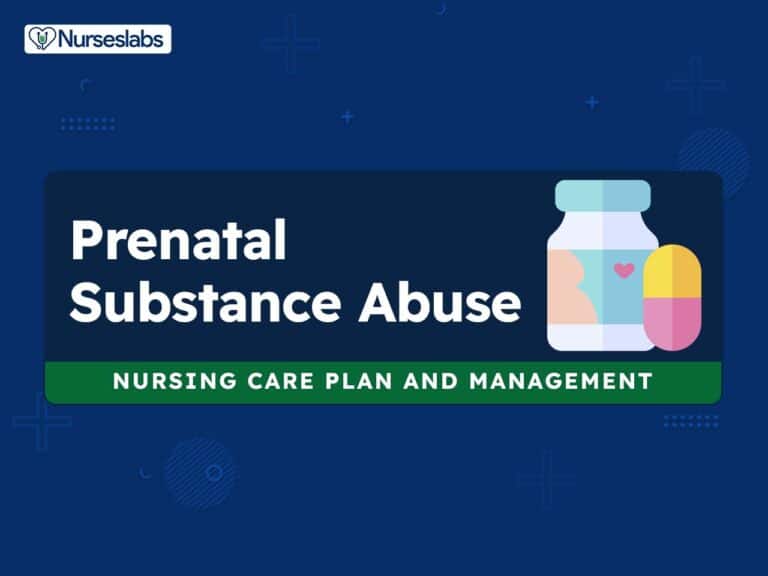

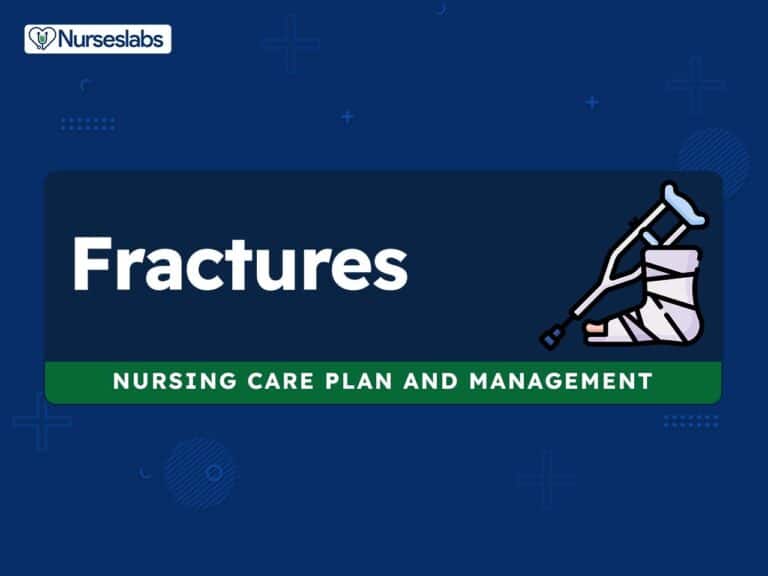
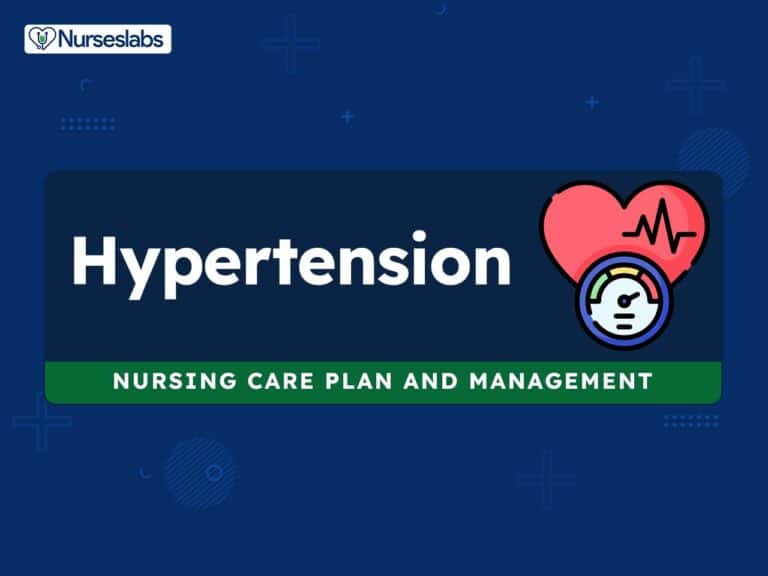




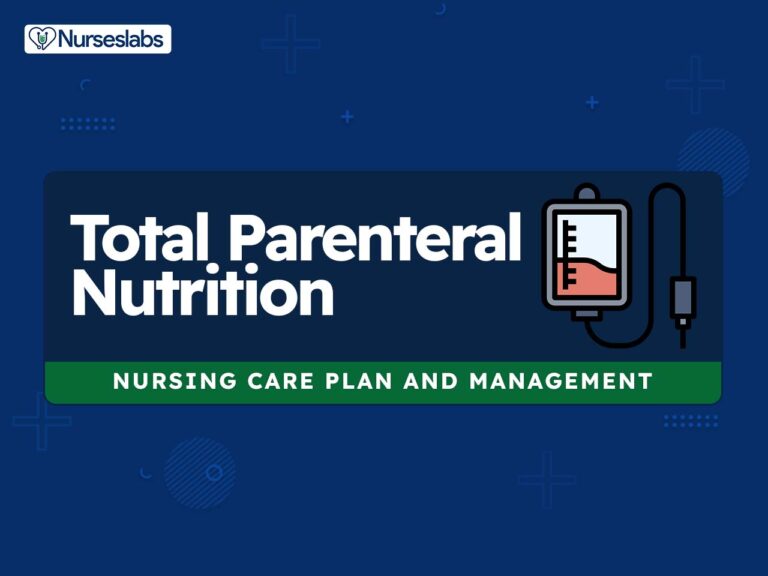

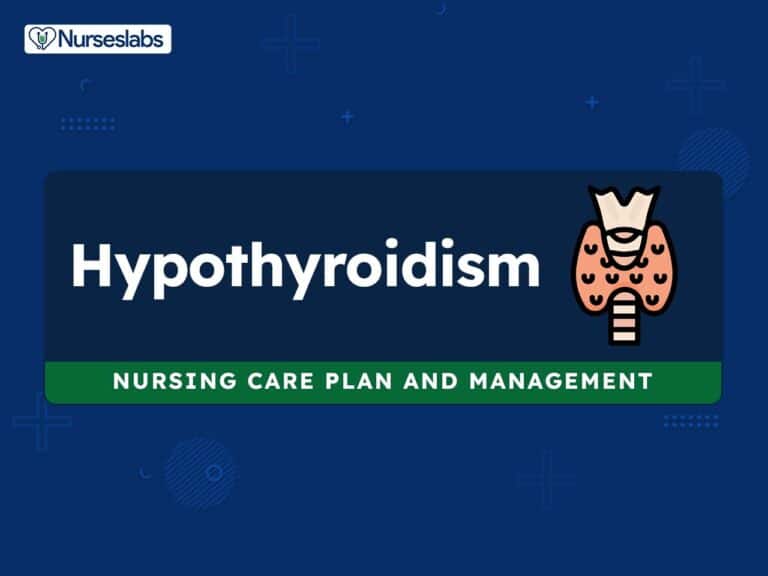
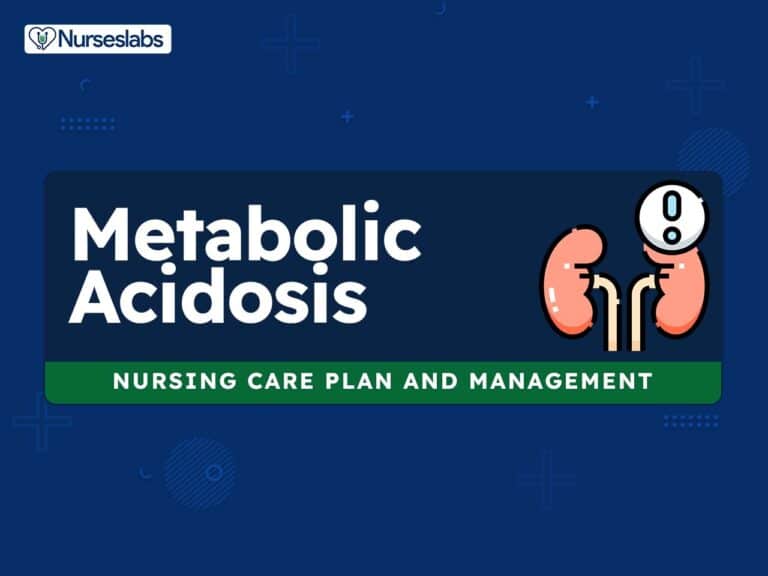
Leave a Comment